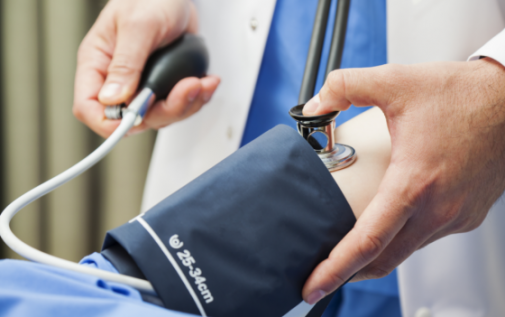A woman’s blackouts baffled her family. How did a new medical device help?
Blacking out due to a slow or irregular heart rhythm is cause for concern. When it happens repeatedly, it’s time to take action.
That’s what Jean Reichardt and her family decided. The 86-year-old from Woodstock, Ill., experienced three such episodes – including passing out at a local store and falling from a kitchen chair – prompting a visit to Dr. Mouyyad Rahaby, a cardiac electrophysiologist at Advocate Good Shepherd Hospital in Barrington, Ill.
Reichardt had been diagnosed with bradycardia, a condition characterized by a slow or irregular heart rhythm, usually fewer than 60 beats per minute. When the heart is pumping that slowly, it can’t get enough blood to the parts of the body that need it. As a result, people with the illness experience dizziness, fatigue, shortness of breath or fainting.
“She had three episodes lately. She was blacking out. She hit her head three times,” says Sandra Luckey, Reichardt’s daughter. “We knew something had to be done.”
The most common treatment for bradycardia is a pacemaker to help restore the heart’s normal rhythm and relieve symptoms. The pacemaker sends electrical impulses to the heart, which in turn boosts the speed at which the heart pumps oxygen-rich blood through the body.
The pacemakers Dr. Rahaby traditionally implants require cardiac wires, also known as leads, and a surgical “pocket” under the skin to deliver a pacing therapy. Pacemakers are lifesavers, but sometimes clots or scar tissue forms around the wires, and when the battery needs to be replaced, the pocket must be opened, creating a potential source for infection or other complications.
Recently, Dr. Rahaby began implanted leadless pacemakers. He is the first to do so at Good Shepherd Hospital. These devices don’t have wires, and they’re very tiny – about the size of a large vitamin. That’s about one-tenth the size of a traditional pacemaker, and its weight is comparable to that of a penny.
A leadless pacemaker is attached to the heart with small tines and delivers electrical impulses that pace the heart through an electrode at the end of the device. Within a month or so after one is implanted, the body forms a capsule around it. With no wires and no need for the pocket, the risk for infection and other complications associated with a conventional pacemaker are significantly reduced. Visible signs of the device also are eliminated.
The Micra Transcatheter Pacing System that Dr. Rahaby uses has an estimated average battery life of 12 years, and it’s designed to be left in the body. When the battery nears the end of its usefulness, the device can be permanently turned off and another one can be implanted without risk of electrical interaction.
Implanting one is different, too. The leadless pacemaker is delivered directly into the heart through a catheter inserted through a leg vein, which requires no surgical incision. With a traditional pacemaker, the cardiac electrophysiologist must access the heart from the top where the proximity to the lungs can result in complications such as an air leak.
“With this new device, I’m not going by the lungs at all,” Dr. Rahaby explains, adding that patients experience an improvement in their symptoms immediately upon receiving a pacemaker.
Sandra Luckey noticed a change in her mom soon after the Dec. 18 procedure.
“She’s more alert. She has more color,” Sandra says, noting that going with the leadless pacemaker over the conventional device was “a no-brainer.” After Dr. Rahaby explained the benefits, Jean Reichardt became the second patient for whom Dr. Rahaby implanted a leadless pacemaker at Good Shepherd Hospital.
“He is fabulous,” Luckey says. “He takes his time explaining things. Talking with him is like talking to your best friend.”
Find out your risk for heart disease by taking our simple and easy Heart Health Assessment.



















Wow! I’m not sure what the time-span was for Mrs. Reichardt’s discovery of her Bradycardia, but it took doctors 3 months, several fainting spells & being out of breathe; 2 head injuries In the exact same spot with the last fall with stitches to back of head! Not until it was when it was decided to place the halter monitor on for the weekend after the last fall, did they discover the bradycardia. Then, my surgery was the very next day! I have the St. Judes pacemaker placed almost 2.5 yrs ago! I think it’s amazing with our medical knowledge today, to have a “wireless” pacemaker is wonderful for Mrs. Reichardt! Mine is not wireless, but I just thank God that it was discovered & I’m here today!